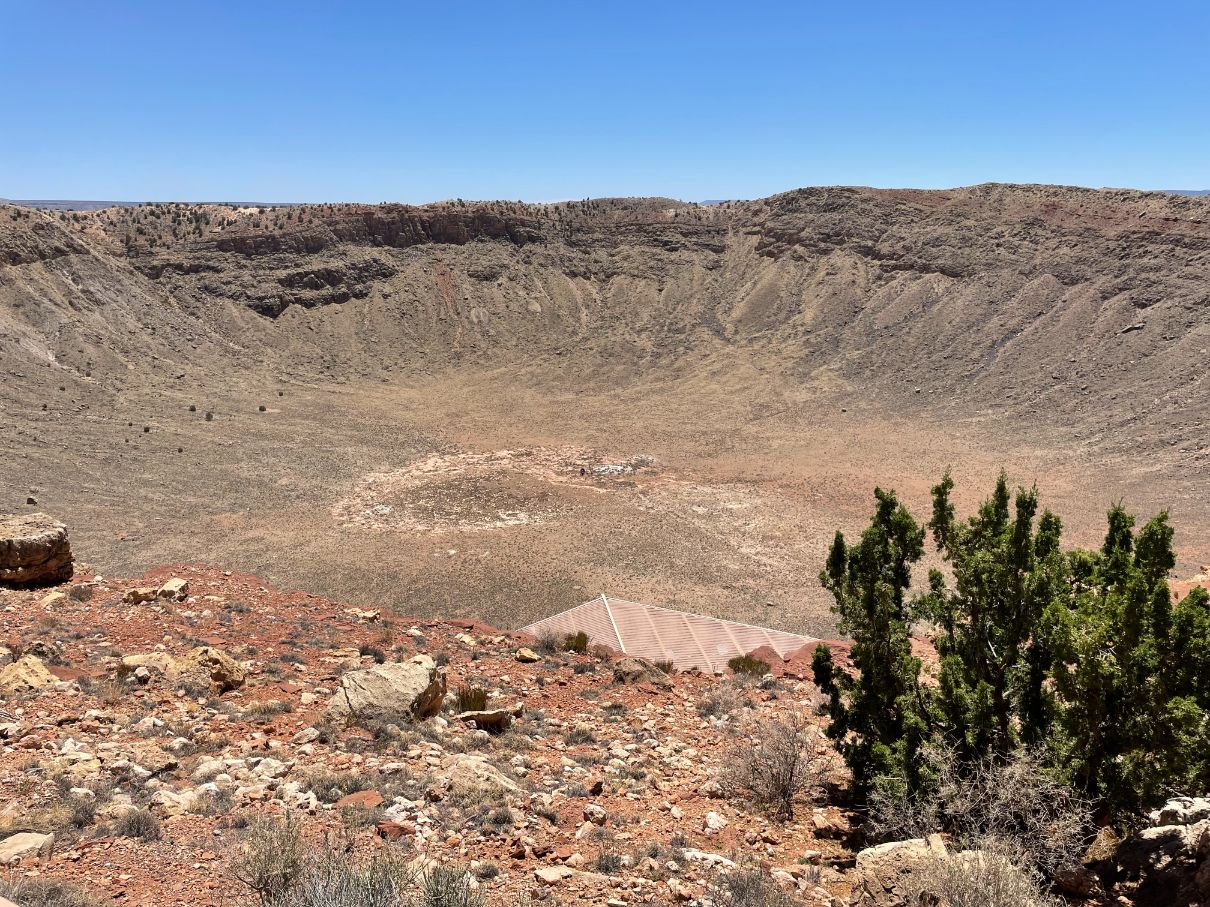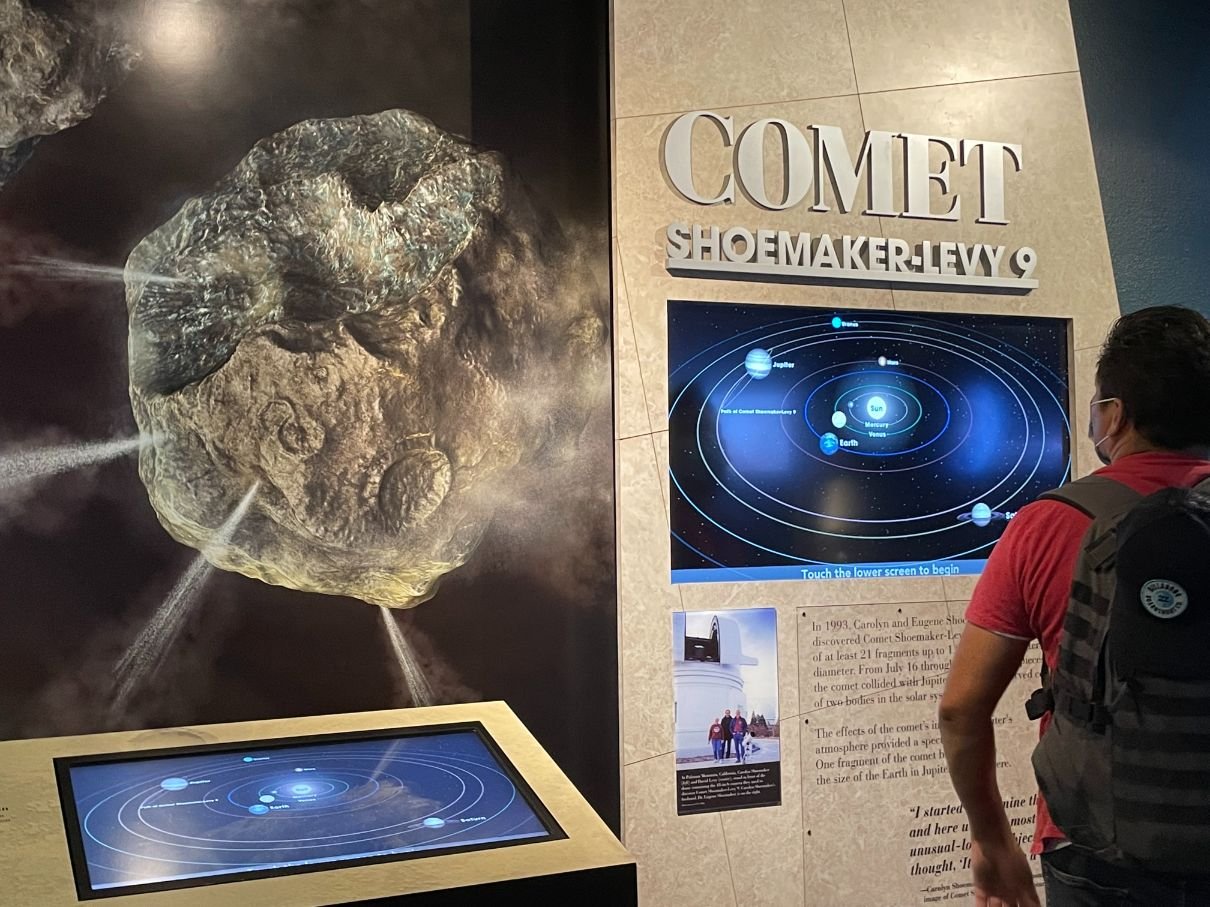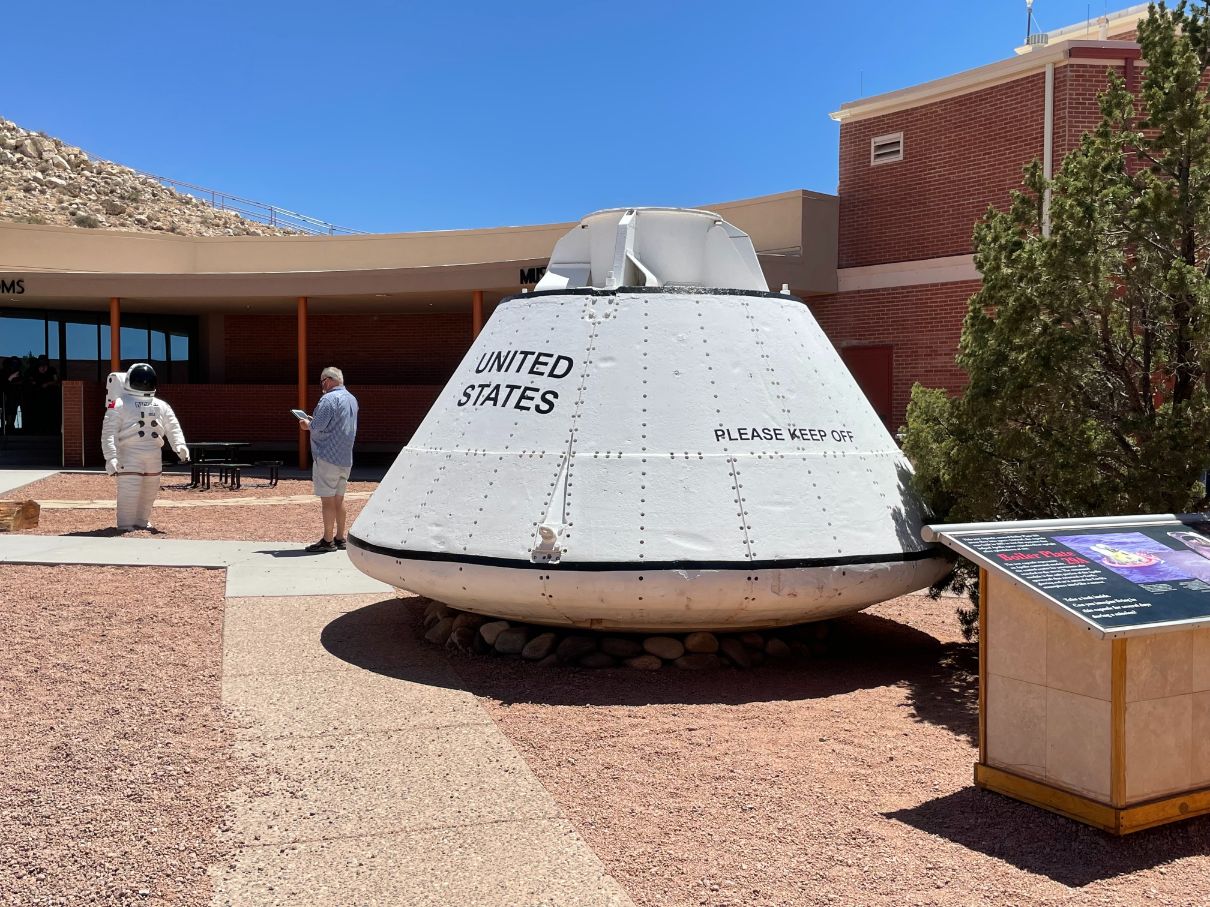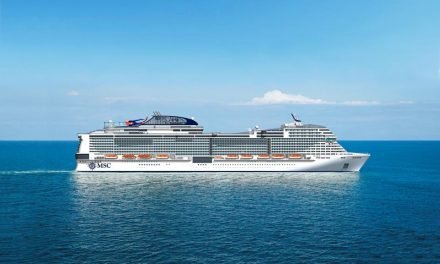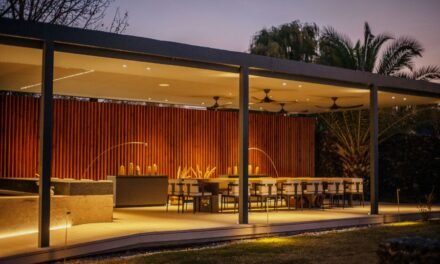
Meteor Crater is worth the detour
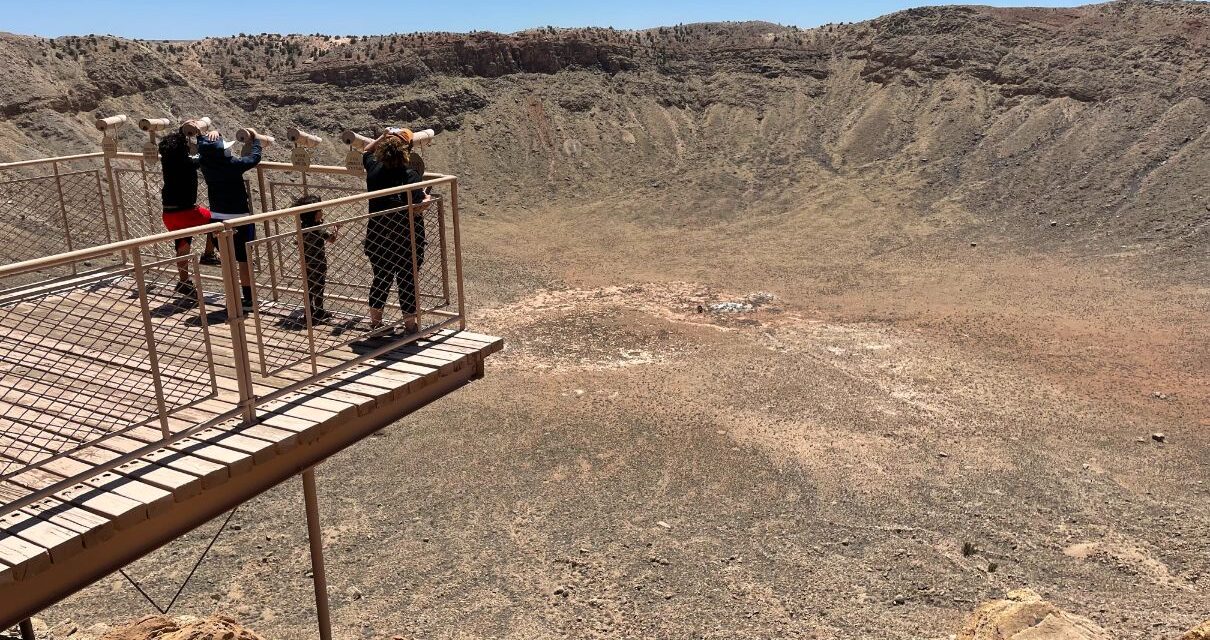
The signs called to me in persistent fashion, as I drove towards Flagstaff, on I-40. I decided I simply could not pass up the opportunity to see the Meteor Crater – “the best-preserved meteorite impact site on Earth” – so I made the easy detour to satisfy my curiosity.
Fifty thousand years ago, a ginormous meteorite, estimated to have been about 140 feet across and weighing a whopping 300,000 tons, struck an area in northern Arizona at a speed of 26,000 mph. The explosion was equal to a force 150 times greater than an atomic bomb and in just seconds, this violent event excavated a mega bowl-shaped cavity measuring three-quarters of a mile wide and 750 feet deep.
Today, due to climate change and landscape changes, the bowl is now 4,000 feet across and 550 feet deep. To fully grasp the enormity of this size, picture twenty football games being played at the same time on the floor of the crater with several million fans sitting in the tiers, ala Roman Coliseum fashion.
Meteor Crater, also known as Barringer Meteor Crater (named for one of the crater’s early investigators, Daniel Barringer) is a U.S. National Natural Landmark. Discovered in 1891, it was reportedly the first “scar” on the planet confirmed to have been created by a space rock. Proof came in the form of large quantities of meteoric nickel-iron rock fragments found in and around the crater.
There are about 150 preserved craters which have been identified on Earth, but Meteor Crater tops the list. Though there are many more meteorites that survive an encounter with Earth’s atmosphere, most typically land in water because oceans cover nearly three quarters of the planet.
Visitors can opt to view the crater from an indoor viewing section or walk outside to one of the observation trails that lead to platforms with telescopes. Moon Mountain is the highest deck; Lower Ramada is the lowest. You can also take a guided tour along the rim if time permits.
Be aware you might need to battle the high winds that this area is known for, as you take in the jaw-dropping sight. My husband had an iron-clad grip on me to make sure I didn’t blow away while taking pictures! Getting a good shot of the crater, however, is not an easy task. It’s just too vast to capture and get a true sense of the magnitude.
Once you’ve seen the crater, head inside to the Discovery Center for a showing of “IMPACT, the Mystery of Meteor Crater” in the big-screen movie theater. Then move on to the interactive exhibits detailing the history of the meteor’s impact and the devastation that occurred, as well as the important role the crater plays in scientific study.
You’ll learn the difference between various astronomical terms, like asteroids, comets, meteors, meteoroids and meteorites. I confess that prior to my visit to the Meteor Crater, I had used a few of these words interchangeably, not realizing their separate distinctions. As a result of the crash course I received on astronomy lexicon, I can now “talk the talk” – or at least fake it to some extent!
You’ll also find out about other preserved craters around the world and get to see the largest ever meteorite found in the area – an impressive 1,406 pounder that you can actually touch.
The majority of meteors that occur in our atmosphere are tiny, the size of a grain of sand. If, however, a meteor like the one that created the Meteor Crater were to hit Earth today, researchers say it would decimate an area as big as Kansas City.
Of additional interest is the terrain of the Meteor Crater, which is known to closely resemble that of the moon. Due to this similarity, NASA designated the place as one of the official training sites for the Apollo astronauts. An Apollo 11 space capsule, used for training by Neil Armstrong, Buzz Aldrin and Michael Collins, is on display outside the Discovery Center.
Included with your admission is the 4D Space Adventure ride. It’s a fun, immersive space flight experience with special effects, including full motion seats.
If the Meteor Crater whets your appetite for more astronomy-related sights, you’re in luck because just thirty-five miles down the road is Flagstaff, where the famed Lowell Observatory is located. Tours of this famed attraction may include science demos, telescope viewing and evening stargazing.










